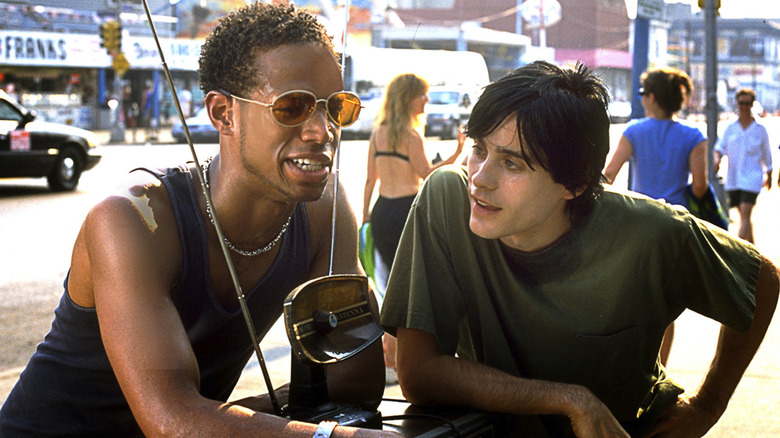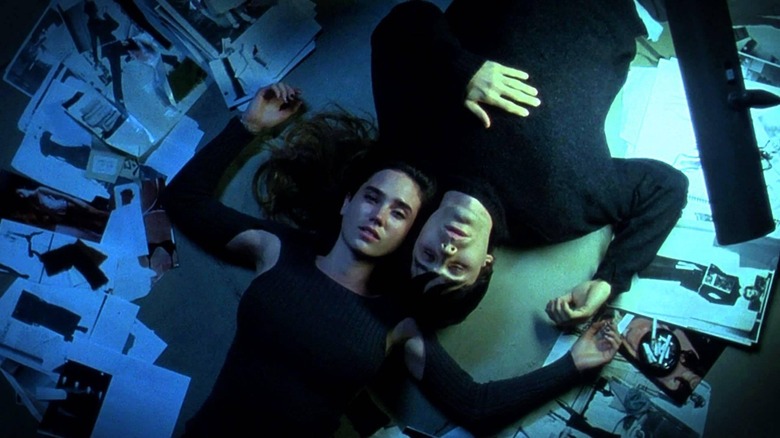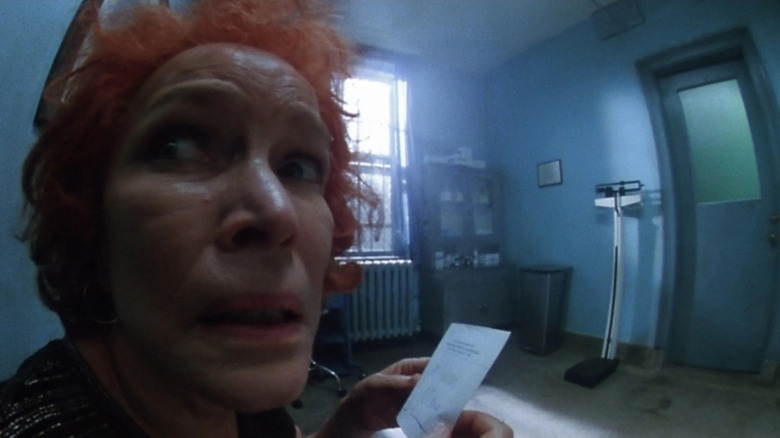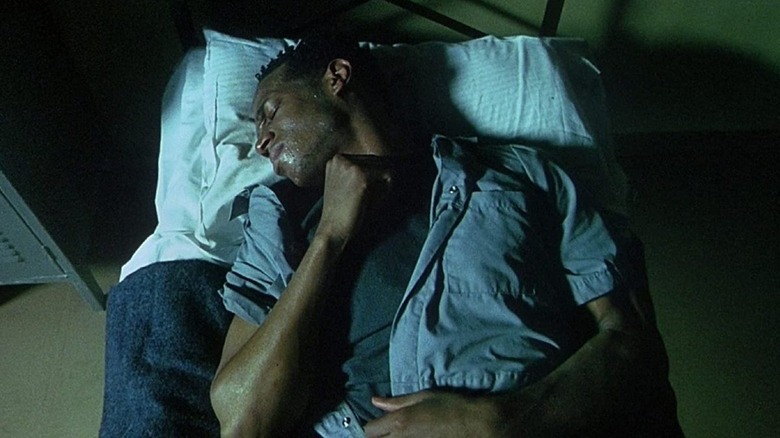Darren Aronofsky Had To Learn To Handle Rejection While Casting Requiem For A Dream
Before he was one of Hollywood's most daring, innovative filmmakers, Darren Aronofsky was just another aspiring director in film school. While in college, the ambitious Aronofsky fostered a relationship with author Hubert Selby, Jr, his literary hero. After adapting one of Selby's short stories in college, the director made his Hollywood debut with the 1998 film "Pi."
Aronofsky won the Best Director award at the Sundance Film Festival and returned to the work of Selby with his sophomore effort, "Requiem for A Dream." The film examines addiction through the eyes of four intertwined characters. Despite the success of "Pi," the depressing nature of his second film made securing financing a challenge.
The artistic Aronofsky was getting a crash course on the business side of Hollywood. After first being told he could make any movie he wanted, only one studio would agree to produce "Requiem for A Dream" — but only if he put together the cast. The bleak story he was telling and his lack of Hollywood experience made casting the film extremely difficult.
'No f***ing way'
Aronofsky has a way of getting inside your head. Within minutes of "Requiem for A Dream," it's obvious that he's telling a complex story through a multitude of filmmaking devices. The director uses spit screens, clips of a fictional television show, freeze frames, time-lapse sequences, and an eerie score to influence viewers on a psychological level. He goes beyond creating empathy with a knack for helping you feel what characters in his films are experiencing. When a character feels uncomfortable, he makes you uncomfortable. And in a story about four unraveling drug addicts, there are a lot of uncomfortable moments.
But on the other side of the lens, Aronofsky needed the right actors to pull off his vision. As a sophomore director spearheading an independent film at the end of the 1990s indie bubble, "Requiem for A Dream" was a hard sell. In an interview with Vulture, Aronofsky shared how difficult it was to cast the film:
"Pretty much everyone in the cast was not what I was aiming for at the beginning of it. I went to a lot of actors before I settled on this cast. There were a lot of great actors that said, 'No f***ing way.'"
Despite all the rejections, the cast Aronofsky "settled" on ended up being a dream team of actors who gave absolutely haunting performances.
'Who on Earth is going to want to see this movie?'
If you need proof of the psychological impact of Aronofsky's films, look no further than Anne Bancroft. She turned down the role of the diet pill addict Sara Goldfarb, but not before telling the director why. Aronofsky explained:
"I had offered it to Anne Bancroft, and I had a beautiful conversation with her, and she told me that it's the first role she passed on that she had to talk to her shrink about. And I was like, 'I guess that's a compliment.'"
Ellen Burstyn, who eventually took the role of Sara, also intended to decline the part. "My agent sent me the script and I read it and I called her and I said, 'This is the most depressing script I've ever read. Who on Earth is going to want to see this movie?'" Burstyn recalled. "And she said, 'Before you turn it down, there's a little movie called 'Pi' you should look at.'"
Burstyn, who changed her mind after watching "Pi," was nominated for an Academy Award for Best Actress for her portrayal of Sara Goldfarb, marking her first nomination in two decades.
Aronofsky was also told no for the role of Sara's son, heroin addict Harry Goldfarb, several times. "I think there were a bunch of actors I went to, the who's who of who was hot back then. And they all passed on it," Aronofsky said.
Although the director had to learn about rejection in the process of making the movie, he also got the chance to work with some talented, young, eager actors.
'An intersection point for many now-prominent careers'
Vulture's Alison Willmore called the movie "an intersection point for many now-prominent careers, a movie made by the young." Jared Leto, who lost weight and immersed himself in NYC nightlife to prepare for the film, was eventually cast as Harry. Leto saw "Requiem for A Dream" as an opportunity to grow as an actor. He said:
"I remember how badly I wanted to be a part of the film and how badly I wanted to work with Darren. He made me earn it, for sure. It was like, listen, I see the opportunity here to challenge myself in a way that I've never been challenged before, and I know that doesn't come around too often."
Aronofsky was surprised by Jennifer Connelly, who played cocaine addict Marion Silver. "At the time, I don't think her career was thriving for some reason, but she gave one of the best auditions I've ever seen to this day," Aronofsky said. "She came in, and I was not expecting anything, and she left with the role."
For the role of heroin addict Tyrone Love, Aronofsky wanted comedian Dave Chapelle, but in typical fashion for the movie, Chapelle said no. "I begged him, but he wasn't really interested in acting at the time. So he passed," Aronofsky recalled. Instead, Aronofsky took a chance on Marlon Wayans, his first dramatic role. Like Burstyn, Wayans agreed once he saw "Pi."
The four actors coalesce in the film for one of the most intense, disturbing climaxes in cinema history.
Despite all the rejections, the young filmmaker was not deterred and produced a film that landed on the American Film Institute's "Movies of the Year" list in 2000. "Requiem for A Dream" also cemented Aronofsky's place as one of Hollywood's most stylistic, daring filmmakers to emerge from the late 1990s.



